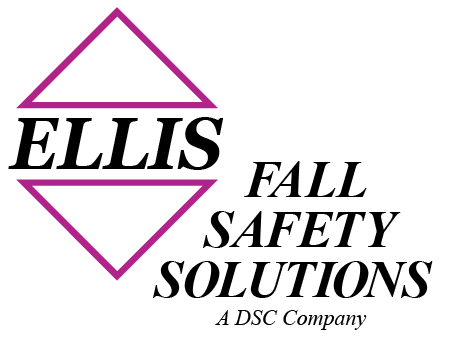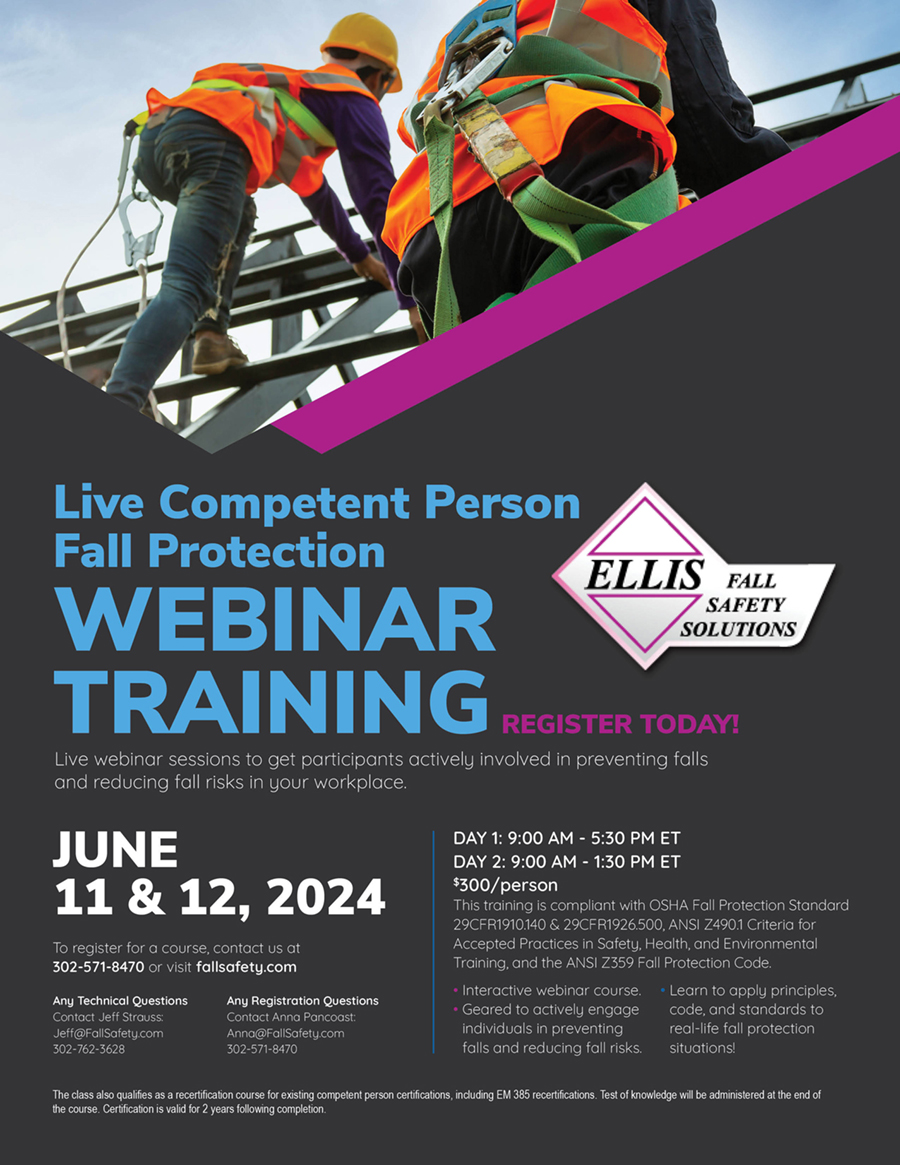Back To FAQ Topics
What is the minimum diameter wire rope needed for a barrier or perimeter cable or working load limit needed on multi-story buildings? I found a minimum tensile strength of 500 lbs on the OSHA website- would that be the answer that I’m looking for?
The perimeter cable is distinguished from a horizontal lifeline because it more closely resembles a guardrail. The horizontal lifeline (HLL) is designed by a Qualified Person in Fall Protection (structural P.E.) for fall arrest and is typically 10-15,000 lbs strength with 500-1000 lbs pretension with dynamic sag limitations and from two to five person capacity. OSHA 1926.500 Appendix C and 1926.502(d)(8) has some criteria; a future Z359 (HLL) standard will have more performance requirements – check current CSA and EN standards. The perimeter cable is defined by OSHA in 1926.502(b)(1) & (b)(9) and 1926.750 Subpart R Appendix G which repeats. Here 1/4″ diameter is minimum to prevent cuts and lacerations with sufficient pretension to avoid a sag of 3″ when a 200 lbs weight is suspended. Two cables with a top rail that is flagged at 6 ft intervals are called for with high visibility. Railing posts are 8 ft apart maximim but I have seen spans of perimeter cables at 25 ft with sufficient pretension to meet the three inch deflection limit. Proper anchorage designs are needed and welded washers on a flange are inadequate; holes in columns require Y-lanyards for fall arrest application are needed; wire ropes bent around sharp beam or angle iron edges without a thimble are inadequate. The practice of stepping on perimeter mid-rails to reach a column fixture always is hazardous. Usually field perimeter cables during construction are 3/8″ diameter and in some cases 1/2″ where equipment contact is likely. When cables are used for perimeter cables in garages for example, energy absorption must be considered for a moving several thousand pound vehicle and many more cables are used for the perimeter; nonetheless damage is considerable during impact and the barrier may be ineffective. Any perimeter cable used for fall arrest must be approved by a Qualified Person in Fall Protection with calculations kept on file. Training in fall protection to Competent and/or Qualified Person level is also offered to supplement your own training.
What is the minimum diameter wire rope needed for a barrier or perimeter cable or working load limit needed on multi-story buildings? I found a minimum tensile strength of 500 lbs on the OSHA website- would that be the answer that I’m looking for?
The perimeter cable is distinguished from a horizontal lifeline because it more closely resembles a guardrail. The horizontal lifeline (HLL) is designed by a Qualified Person in Fall Protection (structural P.E.) for fall arrest and is typically 10-15,000 lbs strength with 500-1000 lbs pretension with dynamic sag limitations and from two to five person capacity. OSHA 1926.500 Appendix C and 1926.502(d)(8) has some criteria; a future Z359 (HLL) standard will have more performance requirements – check current CSA and EN standards. The perimeter cable is defined by OSHA in 1926.502(b)(1) & (b)(9) and 1926.750 Subpart R Appendix G which repeats. Here 1/4″ diameter is minimum to prevent cuts and lacerations with sufficient pretension to avoid a sag of 3″ when a 200 lbs weight is suspended. Two cables with a top rail that is flagged at 6 ft intervals are called for with high visibility. Railing posts are 8 ft apart maximim but I have seen spans of perimeter cables at 25 ft with sufficient pretension to meet the three inch deflection limit. Proper anchorage designs are needed and welded washers on a flange are inadequate; holes in columns require Y-lanyards for fall arrest application are needed; wire ropes bent around sharp beam or angle iron edges without a thimble are inadequate. The practice of stepping on perimeter mid-rails to reach a column fixture always is hazardous. Usually field perimeter cables during construction are 3/8″ diameter and in some cases 1/2″ where equipment contact is likely. When cables are used for perimeter cables in garages for example, energy absorption must be considered for a moving several thousand pound vehicle and many more cables are used for the perimeter; nonetheless damage is considerable during impact and the barrier may be ineffective. Any perimeter cable used for fall arrest must be approved by a Qualified Person in Fall Protection with calculations kept on file. Training in fall protection to Competent and/or Qualified Person level is also offered to supplement your own training.

